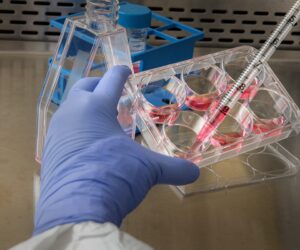If you have a lab, you understand the importance of weights or a weighing scale. It is also vital that all your balances are correctly calibrated to offer the correct weights. You need a professional lab equipment calibration company. But having a basic idea of weights and calibration is also needed.
This guide will brief you about standard calibration weights.
What Are Standard Calibration Weights?
Standard calibration weights are the weights from most analytical laboratories that assist in calibrating lab balances and weights. A certificate accompanies these weights from national or international laboratories. They also act as a guide for calibration, indicating the weight type, weight class, material density, required environmental controls, tolerance levels, etc.
These standard weights are kept with due care as any scratches or mishandling can cause deviation in readings.
Weight Classes
There are three main classes of weights- OIML, NIST, and ASTM.
OIML
OIML is the Organisation International de Metrologie Legale. It is an intergovernmental organization pioneer in offering systems and procedures for harmonizing legal metrology. It provides every kind of weight, from lowest to highest tolerance. The OIML weight classes include E1, E2, F1, F2, M1, M2, and M3. The OIML weight classes are popularly used in Europe and neighboring countries. However, it is not very popular in the US.
OIML F2 and lower weight classes are the most common weight classes in laboratories.
NIST
NIST stands for National Institute for Standards and Technology. It deals with large weights mostly. The class F weights are used in industrial settings, warehousing, manufacturing units, and any other place where large-scale production occurs. They are not fit for laboratory equipment.
ASTM
It was formerly known as the American Society for Testing and Materials. Now it is ASTM International which is a non-profit and non-governmental organization. Its voluntary contribution to developing consensus standards has established it as one of the most coveted organizations for calibration weights. It has divided weights into ten classes which you can learn from Documents ASTM E 617. The higher the weight class, the lower the tolerance level.
It is widely used in the US. Its weight classes 4 or below are used for lab equipment.
Weight Calibration Certificates
When you want to get your weights calibrated, you need the help of a professional calibration laboratory. But how to know that the laboratory is accredited to perform the calibration? There are two types of certificates that these calibration authorities must possess. These are:
ISO/IEC 17025
ISO is an independent non-governmental body that comprises 164 national bodies. Together they have created IISO/IEC 17025 standards. Testing and calibration laboratories must abide by these standards to prove their reliability.
NIST/ NVLAP
It is a program at NIST which is termed as National Voluntary Laboratory Accreditation Program. It offers calibration in multiple fields. It also follows ISO/IEC standards for assessing laboratories.
Whenever you are choosing a laboratory equipment calibration service, ensure that you look for the required certificates and that they are experienced.
What is the Tolerance Level in Calibration Weights?
The tolerance level is the least amount of inaccuracy that is acceptable. No weight can be perfect or remain perfect for a long time. Thus, there is a list of tolerance levels acceptable for a certain weight. For example, for OIML E1 class 50 kg weight, a tolerance level of 25 mg is acceptable. It means a 25 +\- in weight is tolerable and won’t impact the results. There is a tolerance level for each class of weight. The higher the tolerance level, the higher the chances of inaccuracy.
Factors For Consideration
Apart from the certificates and weight classes, other factors, such as materials, styles, construction, etc., play a major role. The standard calibration weights are chosen based on the application and weight type.
Style
In a lab, you will find these different calibration styles. In addition, there are cylindrical weights, knobs, grip handles, hooks, pipe handles, leaf, and slots.
Material
Calibration weights are made of different metals. Stainless steel and aluminum are the most common metals which are used for calibration. Smaller weights, such as up to 1\2 mg, are made of aluminum as it is a lightweight metal. Those ranging from 5mg to 30 kg are made of stainless steel. Heavier weights are made of cast iron, and their tolerance level is also higher as compared to stainless steel and aluminum weights.
Construction
Calibration weights are made of two types- one-piece and two-piece. You must have always seen one-piece weights where a certain weight is made in a single piece of metal. While two-piece weights, such as knobs, have two different pieces. The knob gets fixed on the body, and together they make weight.
Endnote
This is all about calibration weights. If you own a lab or are planning a research career, having a basic idea of weights is necessary. This guide has covered calibration certificates, weight classes, and considerations. You must also learn about which weight class is right for you.
